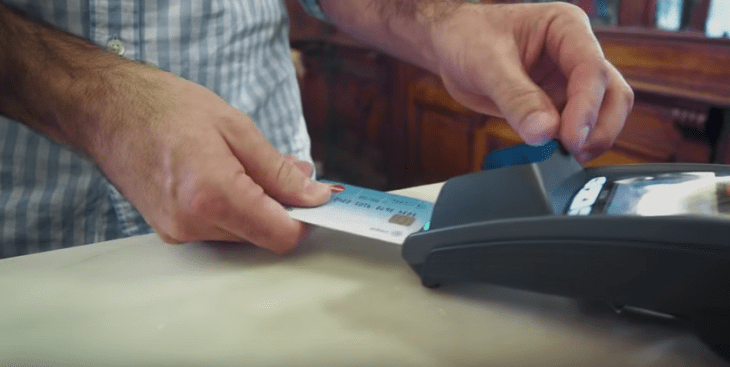Norwegian startup Zwipe, which is taking aim at payment card PIN codes and passwords with an embedded fingerprint reader technology to authenticate card payments, has closed a $5 million Series B funding round.
The investment comes from Photon Future, a wholly owned subsidiary of Shenzhen-based high-tech holding group Kuang-Chi Group. The group is now Zwipe’s largest shareholder, with a 20 per cent stake in the startup.
We last covered Zwipe a year ago, when the company had partnered with MasterCard for the first commercial deployment of the fingerprint reader payment cards. At the time it was slating a rollout of its biometric payments cards in 2015.
However that’s now been delayed to Q1 next year — in an unnamed European market, with an unnamed industry partner.
“Previous pilots were carried out with an early version of the card. For mass distribution Zwipe wanted to ensure durability, flexibility and full adherence to ISO standards first,” says a spokeswoman when I asked why the delay.
She also confirmed Zwipe is still working with MasterCard.
Given how long it’s taken NFC to move from faster payment concept to being embedded as standard on bank cards (at least in some European markets) such delays aren’t surprising — although Zwipe claims its biometric cards work with existing POS terminals and payment infrastructure. So that’s one less piece of the payment ecosystem (retailers) it needs to wait on to get its tech up and running.
Zwipe says the Series B funding — which brings its total raised since 2009 to $11 million — will be used to accelerate commercial deployment, and also for additional R&D activities.
The Zwipe tech embeds a fingerprint reader into a contactless payment card without the need for the card to include a power source — instead relying on payment terminals to power the fingerprint reader, using what it says is a patented energy harvesting technology.
The user’s fingerprint data remains stored on the secure element on the card to minimize the risk of interception. To use the card to authorize a payment, the user places their finger on the fingerprint reader as they swipe their card over a contactless payment terminal, or insert it into a Chip and PIN terminal. Their print is then matched with the stored print on the card in order to authenticate the transaction — meaning there’s no need for them to enter a PIN.
In the case of contactless payments, that added security layer means the per transaction cap on contactless spending limits could be removed — since the biometric is authenticating the user. While for Chip and PIN, Zwipe is touting its tech as a faster alternative to the user entering their PIN (and one that also prevents shoulder surfing).
